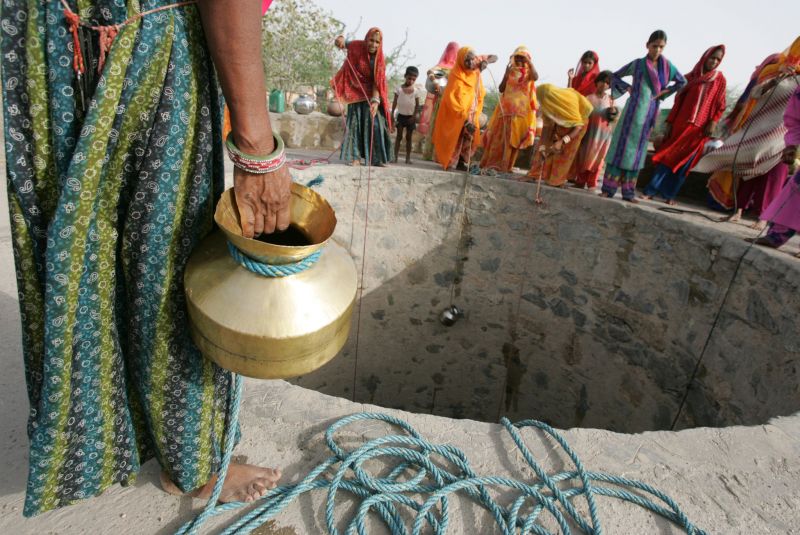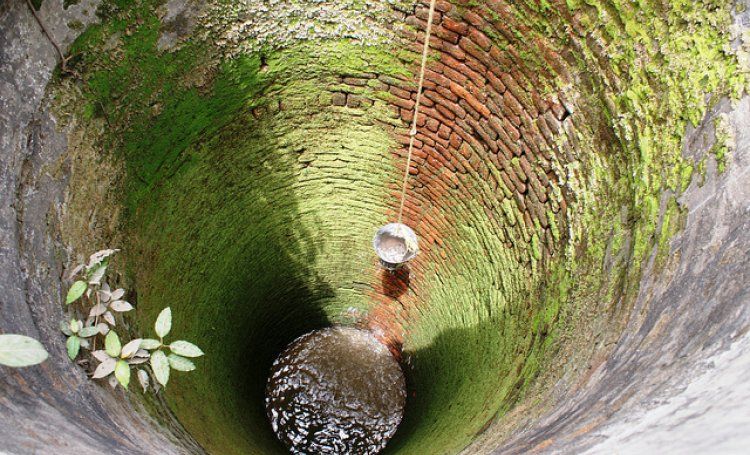Sovereign India on Water Infrastructure
Published on by Aniruddh Gupta in Government
I present you the overview of some of the issues faced during the process of providing clean water in India as well as some projects that the country has undertaken to clean up or recover water.
 Water is perhaps the most important natural resource in any country. It is required for both citizens to survive as well as for the construction of various infrastructural resources and facilities.
Water is perhaps the most important natural resource in any country. It is required for both citizens to survive as well as for the construction of various infrastructural resources and facilities.
Thus it becomes of extreme significance to be able to provide fresh, potable and usable water to the nation. Here, we take a look at some of the issues faced in providing clean water as well as some projects that India has undertaken to clean up or recover water.
What is an infrastructure project in the water sector?
Infrastructure is nothing but the structures, systems, and facilities serving a country, city, or area. Transportation, sewage, water, electric and telecommunication systems are the examples of infrastructure of a business or nation and infrastructure projects in water sector are the most vital part of this.
These water infrastructure projects can be defined as a combination of human built infrastructure and natural infrastructure, such as dams, rivers, lakes, streams, groundwater aquifers, floodplains, floodways, wetlands, and the watersheds that serve or are affected by water and wastewater systems.
- Why is it important?
Water sustains life. So it is no coincidence that the world’s major civilizations have all come up along the banks of mighty rivers. We have to understand this absolute and basic human need for water. You can live without food for more than a month, but cannot live without water for more than a week. In some organisms, (like jellyfish) up to 90% of their body weight comes from water. In the human body, nearly 60% is water - the brain is composed of 85% water, the blood is 79% water and the lungs are nearly 80% water.
Water covers nearly 75% of the earth's surface. But 97% of it is in the oceans and only 3% of the earth’s water can be used as drinking water. However, the major part of it is either frozen in the polar ice caps or locked up in soil. Thus the water that can be utilized by us is only 0.5% of the total water on the earth's surface. Of the freshwater on earth, much more is stored in the ground than is available in lakes and rivers.
Water supply and sanitation has been a primary logistical challenge since the dawn of civilization. Where water resources or infrastructure or sanitation systems are insufficient for the population, people fall prey to disease, dehydration, and in extreme cases, death. In such scenarios, medical and educational infrastructure also becomes an integral part of the complete infrastructure system. The benefits of improved water resources management and institutions are significant.
When toxic substances enter lakes, streams, rivers, oceans, and other water bodies, they get dissolved or lie suspended in the water or get deposited on the bed. This results in the pollution of water whereby the quality of the water deteriorates, affecting aquatic ecosystems. Pollutants can also seep down and affect groundwater deposits. The main sources of water pollution are:
- Domestic Sewage like wastewater and sanitary sewage that is discarded from households.
- Agricultural Run Off like ground water from agricultural fields where chemical fertilizers have been used indiscriminately.
- Industrial Effluents like wastewater from manufacturing or chemical processes in industries
- What is the need?
For sustainable growth, we have to build the complete infrastructure which is a combination of water resources and sanitation. A dam is the cornerstone in the development and management of water resources development of a river basin. The multipurpose dam is a very important project for developing countries, because the population receives domestic and economic benefits from a single investment.
Dams are constructed for a specific purpose such as water supply, flood control, irrigation, navigation, sedimentation control, and hydropower. In India, some examples of a large dam are the Bhakra Dam, Sardar Sarovar, Tehri etc.
On the other hand, water pollution is increasing day by day with urbanisation. Water pollution not only affects people but also animals, fish, and birds. Polluted water is unsuitable for drinking, recreation, agriculture, and industry and diminishes the aesthetic quality of lakes and rivers.
Contaminated water destroys aquatic life and reduces its reproductive ability. Mixing of chemical wastes and dirty elements in fresh water makes it dirty and non-drinkable which can kill species living in and out of water. This is called water pollution. There are many reasons for water pollution. Some of them are as:
- Organic pollutants: Detergent, food processing waste, insecticides etc.
- Inorganic pollutants: Industrial by-products, fertilizers used from agriculture, heavy metals from motor vehicles, silt from construction sites etc.
- Thermal pollutants: Waste hot water released from thermal power projects elevates the water temperature, which decreases oxygen in the water and kills the fish in the water. Thermal pollution can also release too cold water from reservoirs to warm rivers.
- Wastage from residences: Waste thrown by us in water bodies, sewage and waste water.
- Waste oil from refineries
- Radio-active wastes
- How it should be - Reduce, Reuse and Recovery
Even though our local and central governments make large investments each year to keep our water clean and safe, our water systems still do not receive the amount of funding needed to keep them working properly.
 Those that are served by public sanitation systems rely on sewers to keep untreated wastewater from being released into the environment, where it could potentially contaminate our drinking water sources and the natural environment.
Those that are served by public sanitation systems rely on sewers to keep untreated wastewater from being released into the environment, where it could potentially contaminate our drinking water sources and the natural environment.
When water goes down the drain or is flushed down the toilet, it usually enters a sewer system where it travels to a wastewater treatment plant.
The plant treats the wastewater and removes solid waste and other contaminants before releasing the treated water it into the environment. Depending on the type of treatment the wastewater receives, water that is released could have different levels of quality from the water body into which it is released.
The quality of our water is directly linked to the quality of our lives. By supporting clean water initiatives and similar measures that improve our water and wastewater treatment systems, we can each have a hand in ensuring clean, safe water for ourselves, our families and our communities. Sewerage infrastructure is already being constructed by the government but citizens can reduce the usage of water and generation of waste. Reusing and recovering of used water and organic waste & plastics can greatly benefit the program. Some further steps that can be taken include:
- Joint ventures with Indian firms to offer integrated solutions in water treatment, including performing feasibility studies, designing, technical consulting and providing operation and online maintenance services.
- Water supply and efficient use and reuse of water particularly in industrial processes for high polluting sectors, such as cement, pulp, paper and equipment for water saving and water recycling.
- Provision of better design, manufacture and installation of various types of rainwater harvesting systems to cater to the inherent and growing needs of the population to conserve and reuse rain water.
- Water use efficiency solutions (including efficient irrigation solutions, such as sprinkler or drip irrigation and low-flow faucets and other water use systems).
- Water governance (including innovative and novel government policy approaches)
- Water analysis and instruments (such as water-saving, household devices and domestic usage monitoring, equipment).
- Municipal and household water purification systems.
- Water consulting (including services to develop water conservation policy plans)
Media
Taxonomy
- Water Scarcity
- Water Access
- Infrastructure
- Groundwater Resource
- Pollution
- Resource Mobilisation
2 Comments
-
#ashutoshjoshi #AshutoshJoshiWakeUpIndiaMovement #mediafoundation #iyp #youthparliament #Bhartiyayuwasansad#युवासंसद #UNWorldDemocracyDay #InternationalDayofDemocracy#InternationalDemocracyDay #IndianFirst #sansad #waterparliament#watertalk #swatantratasenani #jalsamvad
indanyouthparliament.co.in
-
Thanks for the overwhelming responses on my onbox through personal mail on my article. Please also post your comments and expectation in comment section of this article so that other people can be benefited from the discussion.